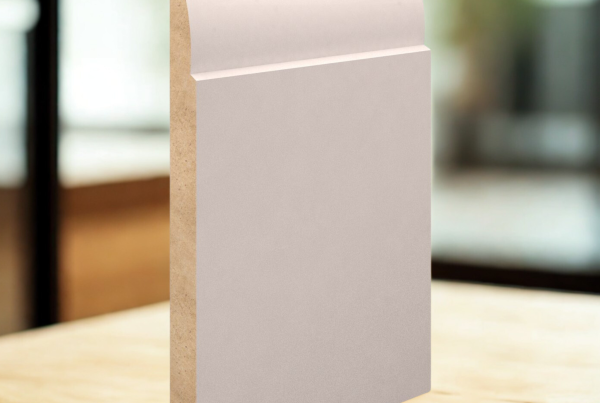 How Long Does an NHS Fire Door Contain Fire?
How Long Does an NHS Fire Door Contain Fire?
When it comes to fire safety in hospitals and healthcare facilities, few components are as critical as fire doors. In the NHS (National Health Service) estate, where the protection of life and continuity of care are paramount, fire doors serve as essential barriers that can delay the spread of fire and smoke. But how long does an NHS fire door actually contain fire?
The answer isn’t just a matter of minutes—it’s a question of design, certification, ongoing maintenance, and how well the door is integrated into the building’s wider fire safety strategy. In this blog post, we’ll break down the function and performance of fire doors in NHS settings, including fire resistance ratings, regulations, maintenance standards, and what that all means in practice.
What is a Fire Door?
A fire door is a specialist door assembly designed to resist the passage of fire and smoke for a specified period. Fire doors are not just the door leaf; they include the frame, ironmongery (e.g., hinges, closers, and locks), glazing (if any), and the seals that expand when exposed to heat (intumescent seals). All components must be fire-rated and work together as a system.
In a hospital environment, fire doors are critical not only for compartmentalising fire and smoke but also for enabling horizontal evacuation—moving patients to another safe part of the same floor rather than needing to evacuate them outside immediately.
Fire Resistance Ratings: FD30, FD60 and More
The key performance measure for a fire door is how long it can resist fire. In the UK, fire door ratings are typically expressed in minutes and designated with an “FD” rating. Common classifications include:
-
FD30 – 30 minutes of fire resistance
-
FD60 – 60 minutes of fire resistance
-
FD90 – 90 minutes of fire resistance
-
FD120 – 120 minutes of fire resistance
NHS Fire Door Standards
Most fire doors in NHS buildings are FD30 or FD60 rated, depending on the risk level of the area. For example:
-
FD30 doors may be used in general hospital corridors and administration areas.
-
FD60 doors are more likely in higher-risk zones like plant rooms, storage areas for flammable materials, and escape routes.
-
FD90 or FD120 doors might be used in specialist areas, such as high-dependency units or fire-resistant walls dividing key fire compartments.
However, the fire resistance duration is only guaranteed if the fire door is correctly installed and maintained.
Fire Doors in the NHS: A Unique Environment
Hospitals pose unique challenges when it comes to fire safety:
-
Vulnerable occupants: Many patients may be immobile or unconscious.
-
High foot traffic: Doors need to withstand frequent use without failure.
-
Equipment and beds: Fire doors must allow for the passage of large medical devices and beds, sometimes requiring hold-open systems or automation.
-
Evacuation complexity: Fire doors must allow for horizontal evacuation through compartmentalised fire zones.
Given this, fire doors in NHS hospitals must not only contain fire but also work seamlessly with electromagnetic hold-open devices, automatic closers, and smoke control systems.
Installation and Certification
To achieve their rated performance, fire doors must be:
-
Independently tested to BS 476 Part 22 or BS EN 1634-1 (European standard).
-
Installed by certified professionals following the manufacturer’s instructions.
-
Fitted with certified components, including hinges, closers, locks, vision panels, and seals.
Hospitals often use BM Trada Q-Mark or Certifire approved fire door sets for assurance that both the product and installation meet the required standard.
How Is Fire Resistance Time Measured?
When we say a fire door is rated to FD60, this means it resists fire for at least 60 minutes in controlled laboratory conditions. The test subjects the door assembly to temperatures reaching over 800°C, measuring how long it continues to prevent flames, smoke, and hot gases from breaching.
In real-world conditions, several factors affect performance:
-
Door misuse (e.g. wedging doors open)
-
Poor maintenance or damaged seals
-
Incorrect ironmongery replacement
-
Wear and tear from heavy daily use
In practice, a poorly maintained FD60 door might fail much sooner in a real fire, potentially within 10–20 minutes. This is why routine inspection and maintenance is so critical in NHS estates.
Fire Door Maintenance in the NHS
Under the Regulatory Reform (Fire Safety) Order 2005, NHS Trusts have a legal duty to ensure all fire doors are fit for purpose. This includes:
-
Regular inspections – NHS guidelines often recommend quarterly or six-monthly fire door inspections by competent persons.
-
Record keeping – Each door should have an asset tag and log history of inspection and maintenance.
-
Replacement of damaged components – Intumescent seals, closers, hinges, and glazing beads must be in full working order.
-
Training – Staff should be aware of the importance of not propping open fire doors or interfering with their mechanisms.
Poor maintenance remains one of the most common reasons fire doors fail to perform as rated in NHS buildings.
Real-World Example: Grenfell and NHS Audits
Following the Grenfell Tower fire, audits of NHS Trusts revealed widespread issues with fire doors, including missing seals, damaged door leafs, and uncertified ironmongery. While many hospitals have since upgraded their fire door strategies, the reports highlight how easily fire resistance ratings can be undermined.
In short, an FD60 door in perfect condition can resist fire for 60 minutes, but that protection drops dramatically if the door has been compromised.
Summary: So, How Long Does an NHS Fire Door Contain Fire?
In theory:
-
An FD30 fire door provides 30 minutes of resistance.
-
An FD60 fire door offers 60 minutes of resistance.
-
FD90 and FD120 doors exist for specialised areas requiring extended protection.
In practice:
-
That performance only holds if the door is properly installed, maintained, and not misused.
To put it bluntly: a fire door is not just a door—it’s a life-saving system. In the NHS, where seconds count and lives are on the line, making sure every fire door performs to its rated duration is not just a regulatory checkbox, but a critical responsibility.
Takeaway for NHS Estates and FM Teams
-
Audit all fire doors for correct certification and rating.
-
Schedule regular inspections and detailed record-keeping.
-
Train frontline staff on fire door function and misuse risks.
-
Ensure replacement components are always like-for-like and certified.
-
View fire doors as part of a broader passive fire protection system.
Need a fire door inspection or upgrade in your NHS facility?
Our team specialises in healthcare fire safety compliance and can help you ensure your fire doors perform exactly as intended—when it matters most.
View our full range of Fire Check Doors here.



